#the palace in Koreiz
Explore tagged Tumblr posts
Text

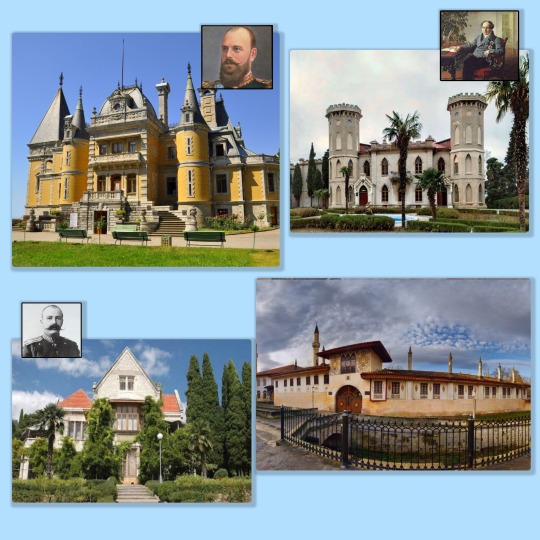
The other palaces in the Crimea
The Palace of Koreiz was owned by the Yousupov Family, and the inside photos show an exquisite place. It is worth taking the time to check them out.
The Palace of Kichkine was built by Grand Duke Dmitry Konstantinovich as a place he could enjoy with his nephews.
Dulber means "beautiful" or "heart stealing" in Tartar. This palace was built by Grand Duke Pyotr Nikolaievich. Design and construction were based on his sketches. The Grand Duke had great knowledge of Middle Eastern Architecture and history. The palace has more than 100 rooms.
The Vorontzov Palace (built by Prince Mikhail Vorontzov) is one of the oldest palaces in the Crimea. It has 150 rooms and is surrounded by gardens and parks. Vorontsov's palace started a tradition of imperial residency in the area. Many Russian elite were attracted to build villas and palaces in the Crimea.
Massandra: This palace was initially being built for the Vorontzovs, but a death in the family caused the project to halt. Alexander III bought the palace and had it redesigned. The family never stayed in the palace, preferring their other palace at Livadia (the old Livadia palace, not the beautiful white heaven we all know and love.
The Golytzin Palace: This palace can only be seen on the outside. It has a long and turbulent story. The Golytzin who built it only lived in it for one year.
Harax: Grand Duke George Mikhailovich's wife, Grand Duchess Marie Georgievna, wanted an English country house in the middle of the Middle East. Everybody thought it could not be done but it was. George and Marie spent the best years of their very troubled marriage living at Harax.
Bagçesaray Palace of the Crimean Khans is a compact architectural ensemble consisting of 17 buildings and 9 inner closed courtyards. I have included a photo here because it is a source of much controversy. The palace is said to be magically beautiful and, in 2013, was listed by UNESCO as a potential addition to its World Heritage List. It was the administrative capital of the Crimean Khanate from 1532 to 1783. Apparently, the renovations have been botched. The issues regarding this historic treasure will have to be picked up again once the region has restored peace. Right now, they are not the priority.
The nobility in the Crimea
By the end of the Russian Empire, Crimea had become the most coveted "vacation spot" for the Russian elites. Palaces continued to sprout up. The sun, sea, mountains, flowers...and nobility had each other. Summers in Crimea became almost like an informal season, with teas, picnics, the occasional balls, dinners, etc. And protocol was eased. The Tsar was a frequent visitor to Harax and Dulber (at one point.) He enjoyed sitting outside and smoking. When he was there, the cossacks were there for musical entertainment.
.
#russian history#imperial russia#romanov family#Princess Zenaida Yusupova#Koreiz#Harax#Dulber#Golytzin Pa;ace#Vorontsov Palace#Dulber Palace#Kichkine#Bagçesaray Palace#Massandra Palace
26 notes
·
View notes
Video
youtube
(со страницы https://www.youtube.com/watch?v=v5DxWDGjHlY)
#дворец Дюльбер#Дюльбер Мисхор#крымские дворцы#достопримечательности Мисхора#дворец в Кореизе#Романовы в Крыму#Дюльбер#санаторий Дюльбер#Николай Краснов#великий князь Петр Николаевич#МИсхорская гавань#Мисхор история#Palace Dyulber#Dulber Miskhor#Crimean palaces#Miskhor's sights#the palace in Koreiz#the Romanovs in the Crimea#Dyulber#the sanatorium Dyulber#Nikolay Krasnov#the Grand Duke Peter Nikolayevich#the Miskhor Harbor#Mishor history
0 notes
Text

Livadia Palace was the summer retreat of the last Russian Tsar, Nicholas II, and his family in Livadiya, Crimea.Formerly granted to Lambros Katsonis and later a possession of the Potocki family, the Livadia estate became a summer residence of the Russian Imperial family in the 1860s, when architect Ippolito Antonovich
Monighetti built a large palace (the Grand Palace),a small palace (Maliy Palace) and a church there. The residence was frequented by Tsar Alexander II of Russia, while his successor Tsar Alexander III used to live (and died) at the Maliy Palace.His son Tsar Nicholas II decided to have the Grand Palace demolished and replaced with a larger structure. (The smaller palace was preserved, as the place of his father's death, but was later destroyed during World War II.)
Around 1909, Nikolay Petrovich Krasnov, Yalta's most fashionable architect, responsible for the grand ducal residences in Koreiz, was engaged to prepare plans for a new imperial palace. The Tsar's diary indicates that the design was much discussed in the Imperial Family; it was decided that all four façades of the palace should look different. After 17 months of construction, the new palace was inaugurated on 11 September 1911.
Livadia Palace was the place Tsar Nicholas ll chose to retire to after his abdication and the forming of the new government of Russia.
2 notes
·
View notes
Photo
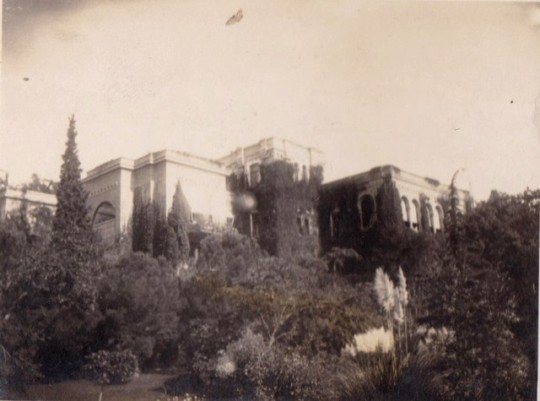
Koreiz
11 notes
·
View notes
Photo

The Yusupov Palace, Koreiz, Crimea.
1 note
·
View note
Text
"In St. Petersburg we work, but at Livadia, we live."
Grand Duchess Olga Alexandrovna
In 1909, Nikolay Krasnov, who was responsible for the Yousupoff Palace in Koreiz, was engaged to design a new imperial palace in Livadia (before that, there had been an imperial residence in Livadia consisting of a large and a small palace used by Alexander II and later by Alexander III, who died at the smaller residence.) When Nicholas II decided to build the new palace, he also demolished the older residence but left the small palace where his father died.
The Tsar's diary indicates that the Imperial Family discussed the design; it was decided that all four façades of the palace should look different. After 17 months of construction, the new palace was inaugurated on 11 September 1911. In November, Grand Duchess Olga Nikolaevna celebrated her 16th birthday at Livadia.
The family was always the happiest at Livadia.

One of the Tsar's "motors" at Livadia. If you look carefully, you can see the "side of the palace" where the car is parked and the main entrance in both the contemporary colored and black and white photos.

Above is the beautiful Italian Courtyard of the palace as it stands today. If you look at pictures taken when the Romanovs used the palace, the centerpiece of the courtyard was different. Today, there is a fountain at the center. Examining the older pictures (below), you can see that there seemed to be what I can only describe as a "well" at the center of the courtyard. There was a column on each side of the well. In one of the photos below, you can see Grand Duke Dmitry Pavlovich; he had his own rooms at the Livadia Palace.


Nicholas II and his family were so at ease at Livadia that they also conducted some minor official functions in addition to family activities. When the family went to Livadia, they usually went as far as Yalta by sea; it is easy to infer that the official activities they conducted were related to the crew of the Standart. In addition, at the time, it was believed that mountain air and rest could cure tuberculosis, and there were several spas and sanatoria in the mountains in the area. The Empress and the girls visited the sick there (they also participated in other charitable activities.)
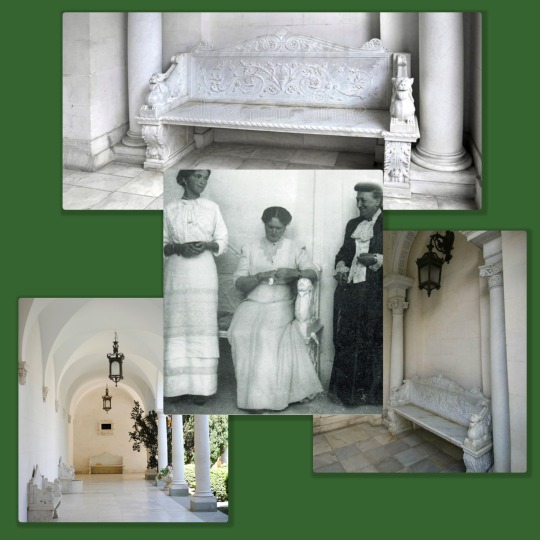



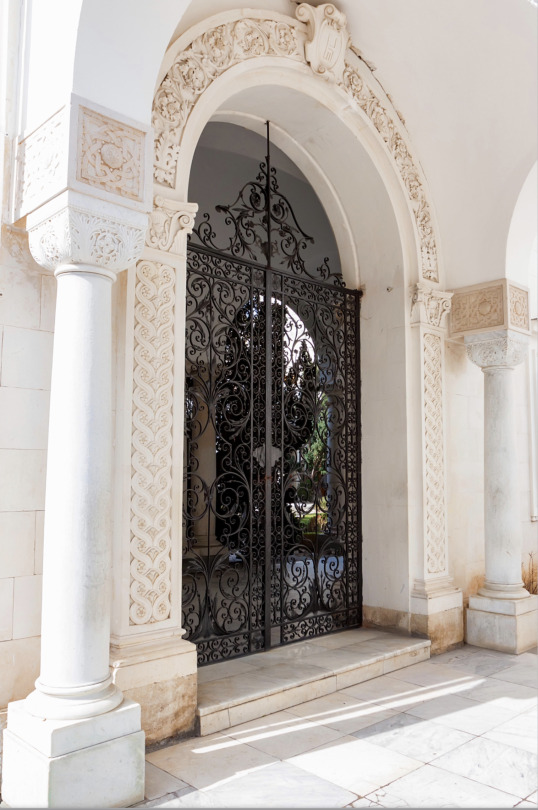
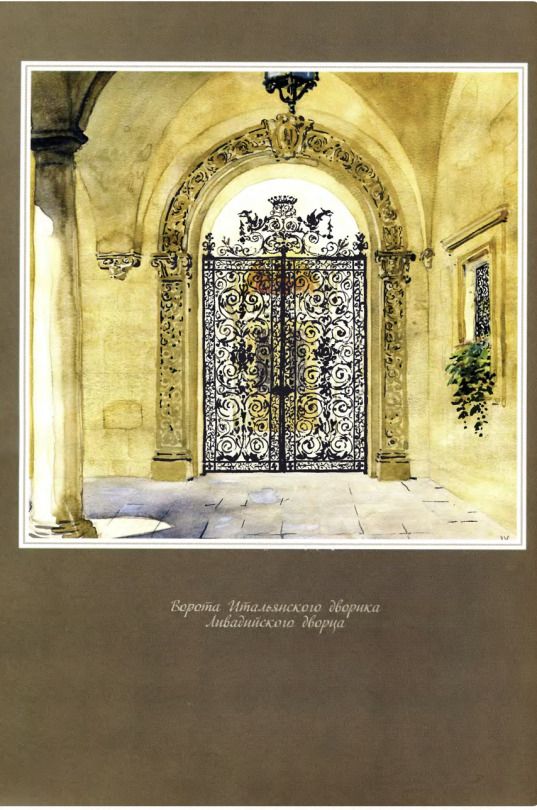
The Yousupov family gifted the beautiful door above to Nicholas and Alexandra. The painting next to it is from a beautiful book by Kravnov ("Fiftieth Anniversary of Yalta"), who worked on the palace's design (and on that of the Crimean summer residences of several Grand Dukes.) The window is also featured in the painting.
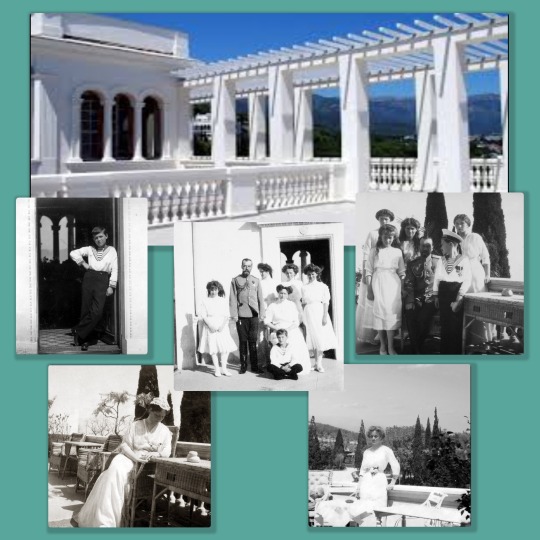
The "solarium" seems to have been a very popular area. Nicholas and his children preferred the outdoors, and Livadia seemed to provide the Empress with the perfect environment to get sun and fresh air in comfort regardless of her many ailments.

This is the "Moorish" courtyard of the palace. It is small, but notice the exquisite tilework on the walls. And, of course, the little balcony between the windows seemed perfect to Alexis for him to "address" his family.
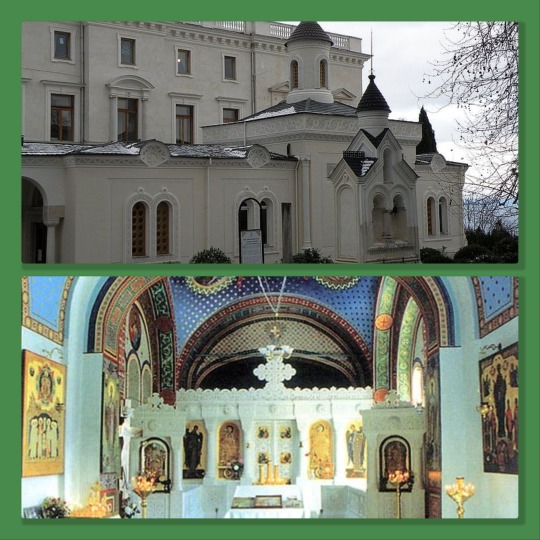
The palace had a chapel so that the Romanov family could worship in privacy.
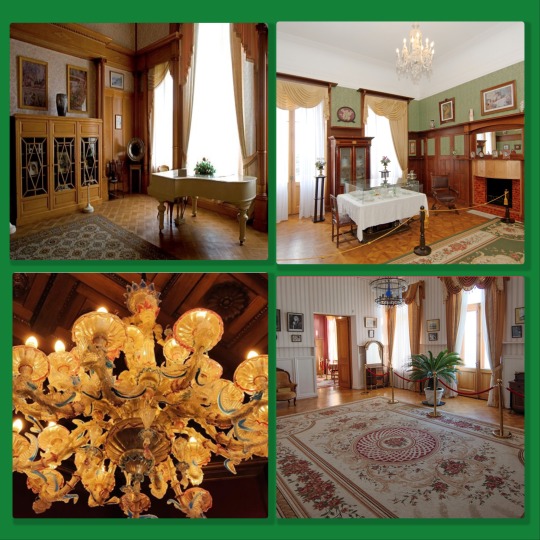
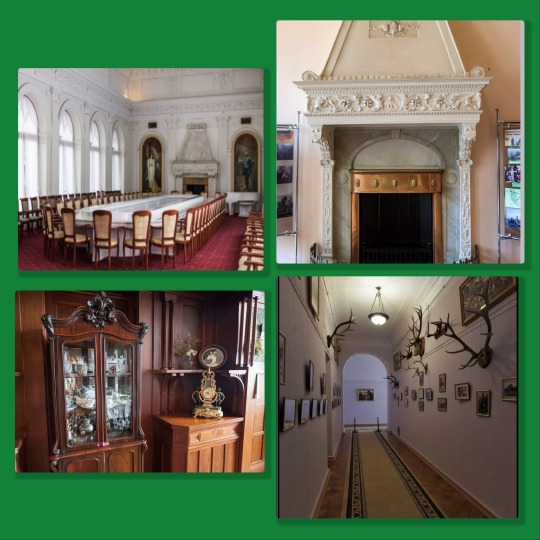
A few of the interiors of the palace. The chandelier is Murano Glass (amazing that it survived all these years.) Olga's coming-of-age celebration took place in Livadia in the formal dining room in the photograph above, dancing spilling into the flower-perfumed courtyard. That is a luxury of the type you cannot buy! The girls' rooms are currently being restored. There are pictures of the rooms as they were, but I was not sure they were from Livadia, so I did not include them.
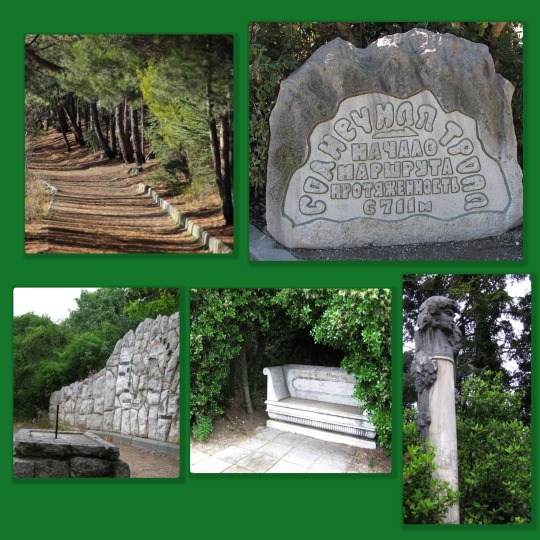
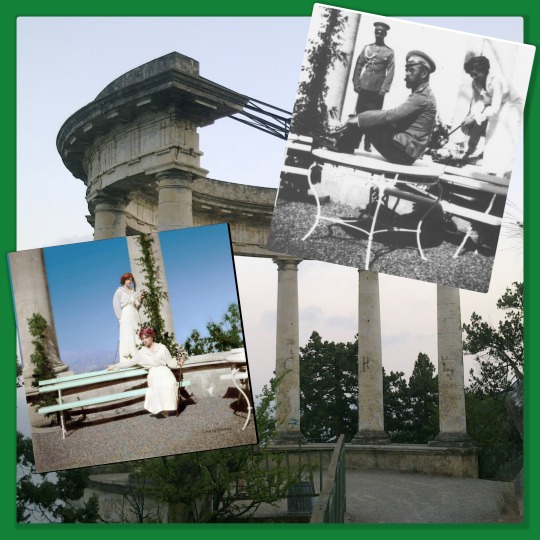
Finally, some photos of the "Tsar's Path" (or Sunny Path), which exists to this day (it goes from Livadia Park to the city of Gaspra.) The family loved to walk this path (regardless of its name, it is not sunny but pleasantly breezy). This path is on one level so that anybody can walk it, regardless of their cardiovascular status. I have read two stories about how it "emerged," and as usual, the truth is probably in the middle. First story: The new Livadia Palace did not exist yet, but the Romanovs used the old palace and always loved coming to Livadia. Alexander III kept gaining weight, and his doctor recommended that he walk but not overdo it...so Alexander had the path leveled. The path's beginning and end differed from what they would be later. Second Story: Sandro had the path from Ay Todor toward Livadia built because Nicholas and Sandro's families always visited each other (they started calling it the Prince's Path.) Nicholas loved the idea and extended the path.
Today, the main path remains, and other routes to other small towns can be hiked from it. Many of the same benches and sculptures are where they were at the time of the Romanovs.
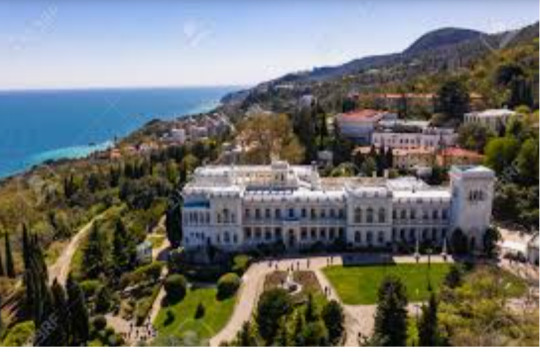
Just one last photo. Here, you can see how close the palace is to the mountains and the sea. A beautiful big house full of fresh air and light with flowers perfuming the air. No wonder Olga liked it so much! (gcl)
#russian history#romanov dynasty#nicholas ii#otma#Empress Alexandra Feodorovna#Emperor Alexander III#Grand Duke Alexander Mikhailovich#Ay Todor#Nikolay Krasnov#grand duchess olga nicholayevna#Grand Duchess Tatiana Nicholayevna#Grand Duchess Maria Nicholayevna#Grand Duchess Anastasia Nicholayevna#Tsarevich Alexei
64 notes
·
View notes
Text
Irina Alexandrovna Romanova (1895 -1970)
When Grand Duke Alexander Mikhailovich married Grand Duchess Xenia Alexandrovna (sister of the then Tsarevich Nicholas Alexandrovich), he was marrying one of the best matches in Europe: Xenia was the daughter of the Tzar Alexander III and the sister of the future Tzar Nicholas II. She had been in love with "Sandro," her second cousin, since childhood (and he saw no reason to discourage her affections, of course)
Sandro and Xenia had seven children. Irina was their first child and only daughter. This beautiful, quiet, delicate child was the first grandchild of Alexander III (who died the year before she was born) and would be the only biological niece of Tzar Nicholas II.

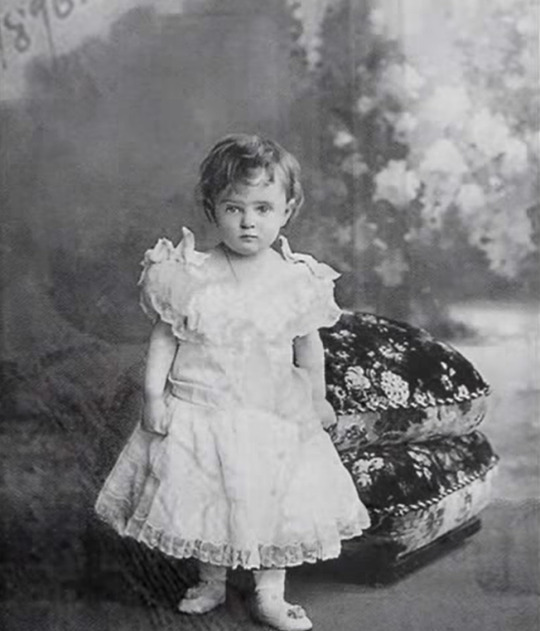
During the first few years of their respective marriages, the Tzar and Empress Alexandra and Grand Duke Alexander and Grand Duchess Xenia spent a lot of time together, and their daughters Olga and Tatiana, and Irina being very close in age, spent a lot of time together and developed a relationship. Distance would later grow between the couples and the children.
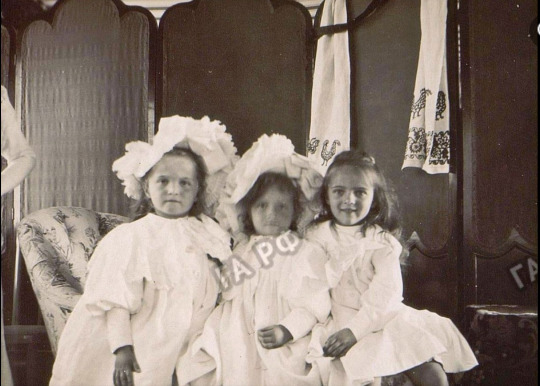
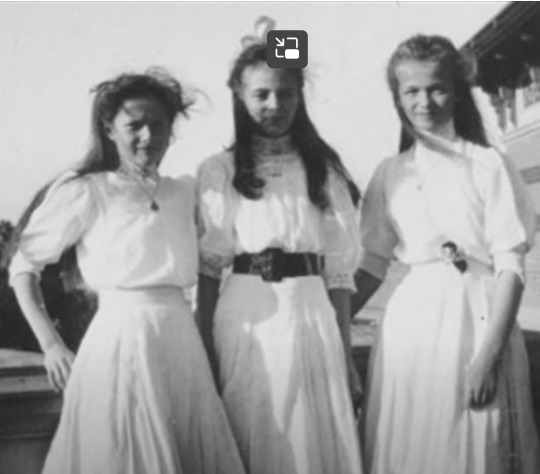
By the time Xenia was pregnant with her seventh child, her marriage to Sandro had gone sour. Sandro had fallen in love with a French/Spanish woman and was having an affair with her. Subsequently, Xenia started an affair of her own. Some sources say that they managed to keep their marital problems from their children; others that their quarrels might have had something to do with Irina's decision to marry Prince Felix Yusupov when he asked.
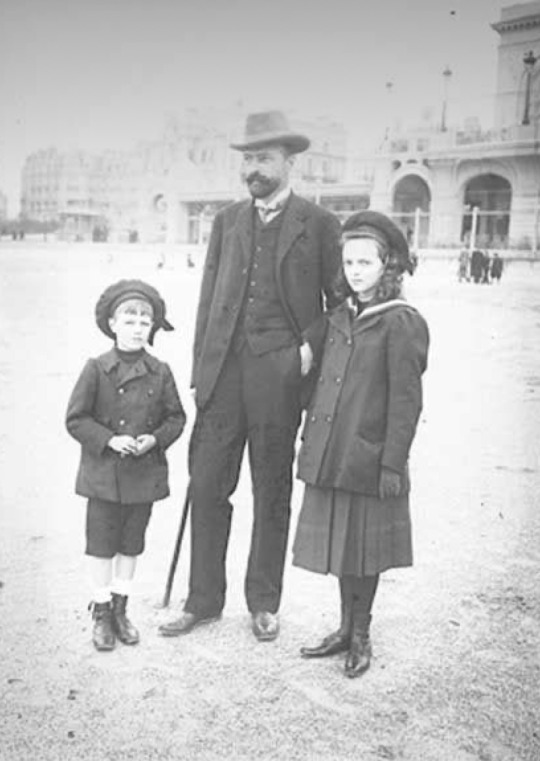

Felix was handsome, extremely smart, and one of the richest men in Russia, but he had a reputation. Irina accepted him as a bridegroom regardless of her parents' misgivings. Felix had a wild youth which seemed to include affairs with men and women. He enjoyed dressing as a woman and wearing his mother's jewels; apparently, he even caught Edward VII's eye at some point. When the Dowager Empress Maria Feodorovna talked with him about this behavior before his marriage to Irina, he did not deny it. Still, he said that his wild days were over, and he was very much in love with Irina.


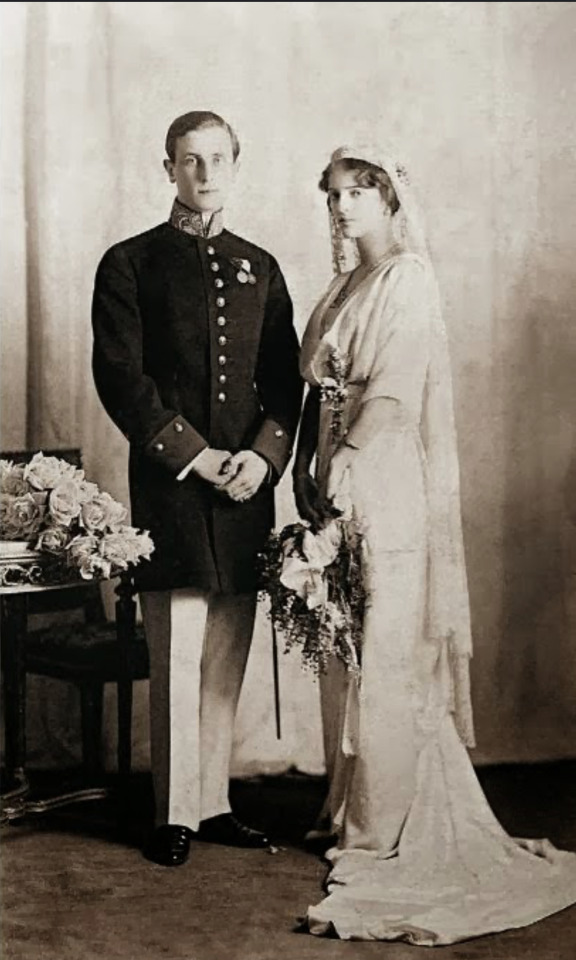
Irina had no qualms about signing away succession rights for their future progeny when she married Felix, who was not royal (their marriage was morganatic.) She married him wearing a veil that had belonged to Marie Antoinette. Both looked beautiful. Their wedding was the last grand happening (1000 guests) before the Great War.
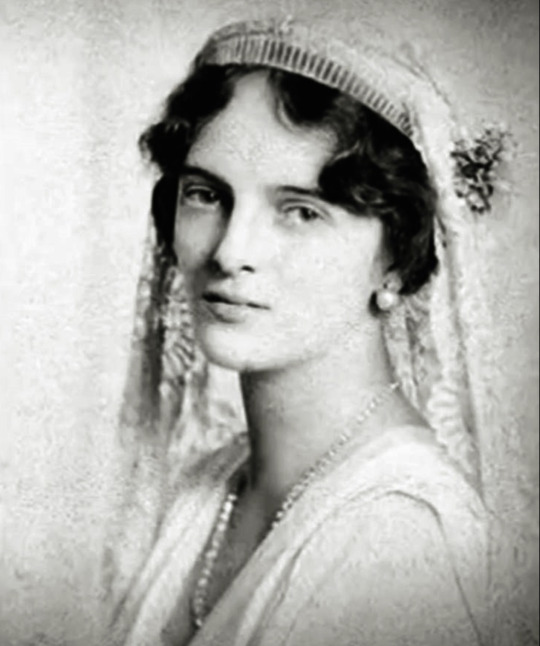
Felix and Irina were out of Russia when WWI started and had difficulty passing through Germany to return to Russia.
The Yusupovs settled in a section of Felix's parents' Moika Palace. Felix and Irina had one daughter (whom they named Irina but called "Bebe") and helped the war effort in Russia by opening two hospitals and a sanatorium in their Crimean state of Koreiz.
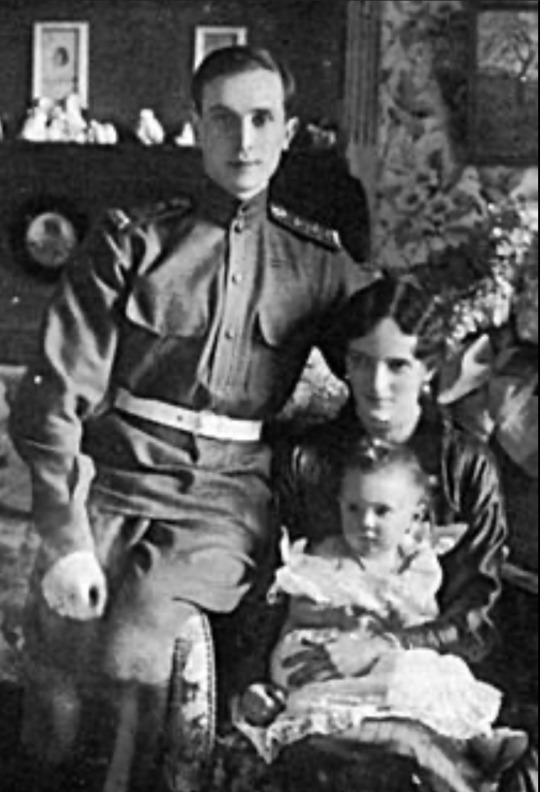
Felix would go on to kill Rasputin (he was banished to Koreiz by the Tzar) in a misguided effort to help the dynasty survive. As things in Russia became worse. A group of members of the Imperial Family, including the Dowager Empress, Irina's parents and brothers, and several Grand Dukes and their families, avoided being imprisoned and murdered by seeking shelter in Crimea. The Russians held them, prisoner until the Treaty of Brest-Livtosk was signed. Interestingly enough, the Germans liberated them. They left Russia in a warship sent by England to rescue the Dowager Empress.
They lived in an apartment Felix had in London; they had also smuggled out paintings and jewelry. There was a car they had not used in years waiting in a garage in Paris. The couple was extremely generous to the Russian Community and gave a lot to the exiles in need. They eventually bought a mansion in Paris and opened a couture house in Paris, which was very successful for a few years.


Felix and Irina lead an expensive lifestyle, and their couture business went bankrupt (after significant success.) By 1934, as luck would have it, Metro-Goldwyn-Mayer released a film named "Rasputin and the Empress." Felix sued the company for slandering Irina and won the lawsuit. He also released two books which did very well.
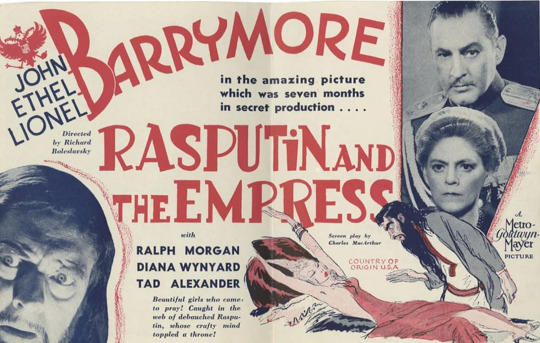
After this, the coupled lived a quiet life (for them), supporting young artists and attending various functions of the Russian emigre community.


Irina remained close to all her relatives and helped them whenever she could. Her father, Grand Duke Alexander Mikhailovich, died in her arms.
Felix's and Irina's marriage turned out to be a great success. They were married and lived together, supporting and caring for each other for over fifty years. When Felix died in 1967, Irina was grief-stricken. She died three years later.
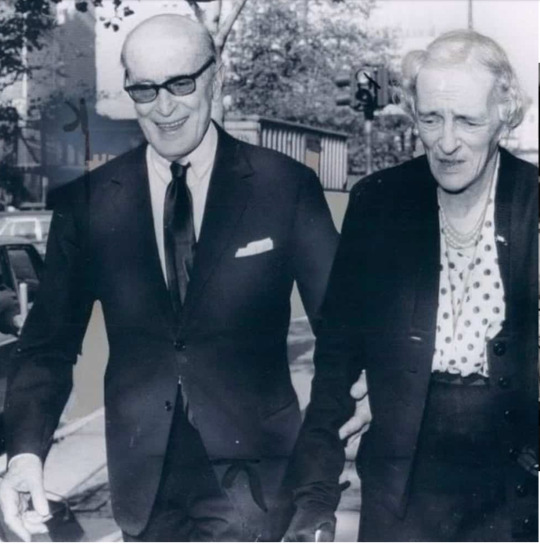

#russian history#romanov dynasty#Imperial russia#NAOTMA#Grand Duchess Xenia Alexandrovna#Princess Irina Alexandrovna#Prince Felix Yousupov#IRFE#Grand Duke Alexander Mikhailovich
96 notes
·
View notes
Text
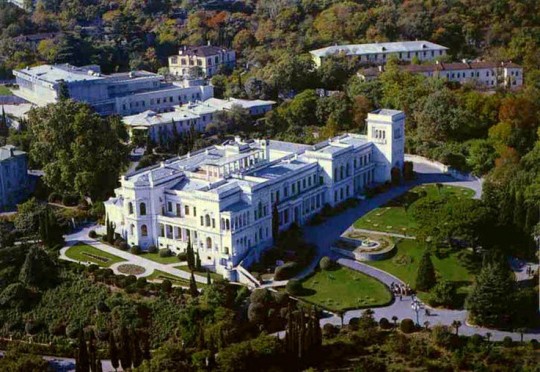
Livadia Palace Ливадийский дворец was a summer retreat of Tsar Nicholas II of Russia and his family in Livadiya, Crimea in Livadiya,the Crimea of Imperial Russia.
Formerly granted to Lambros Katsonis and later a possession of the Potocki family, the Livadia estate became a summer residence of the Russian Imperial family in the 1860s, when architect Ippolito Monighetti built a large palace (Grand Palace), a small palace (Maly Palace), and a church there. The residence was frequented by Tsar Alexander II of Russia, while his successor Tsar Alexander III of Russia used to live (and died) in the smaller palace. His son Tsar Nicholas II of Russia decided to have the larger palace demolished and replaced with a larger structure. (The smaller palace was preserved, as the place of his father's death, but was later destroyed during WWII.)
Around 1909, Nikolai Krasnov, Yalta's most fashionable architect, responsible for the grand ducal residences in Koreiz, was engaged to prepare plans for a new Omperial palace. The Tsar's diary indicates that the design was much discussed in the Imperial Family; it was decided that all four façades of the palace should look different. After 17 months of construction, the new palace was inaugurated on 11 September 1911.
0 notes
Video
youtube
(со страницы https://www.youtube.com/watch?v=D2GFhsisHs8)
#Mishor#Gaspra#Koreiz#South Coast#palaces Dulber#Yusupov#Yasnaya Polyana#Ai-Todor#Kharaks#Crimea coast#Miskhorskay park#Cair#a monument to VI Lenin#Mishor attractions#beaches Mishor#Мисхор#Гаспра#Кореиз#Южнобережье#южнобережные дворцы#Дюльбер#Юсуповский дворец#Ясная поляна#Панина#Толстой#Ай-Тодор#Харакс#побережье Крыма#Мисхорский парк#заброшки
0 notes
Photo
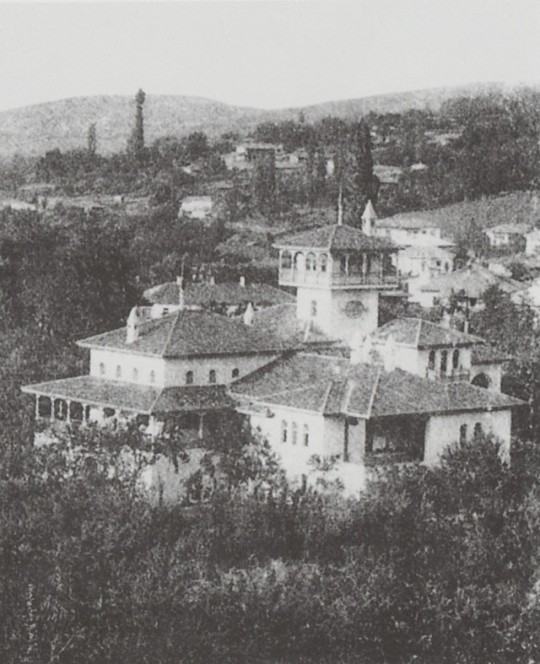
Kokkoz. Crimea.
Kokkoz was gifted to Princess Irina Youssoupoff in 1914, and Prince Felix Youssoupoff favored Kokkoz over Koreiz. He would fondly recall the estate in his memoirs, “Our estate of Kokoz, which in Tartar means "blue eye," lay in the heart of a valley, near a small Tartar village of white, flat roofed houses. It was a corner of fairyland, especially in the spring when the apple and cherry trees were in bloom. As the old house was falling to pieces, my mother bad a new one built in the style of the country. From the small hunting lodge which had first been planned, it soon developed into a large and beautiful house reminiscent of the Khan Palace at Baktchisarai. It was white, with a roof of old glazed tiles which time had turned to soft shades of green. An orchard surrounded the house, a little stream ran by the gate; one could fish trout from a balcony.”
#Kokkoz#Yusupov estate#Prince Felix Youssoupoff#Princess Irina Youssoupoff#russian nobility#crimea estate#Yusupov#Youssoupoff#Youssoupov
8 notes
·
View notes




